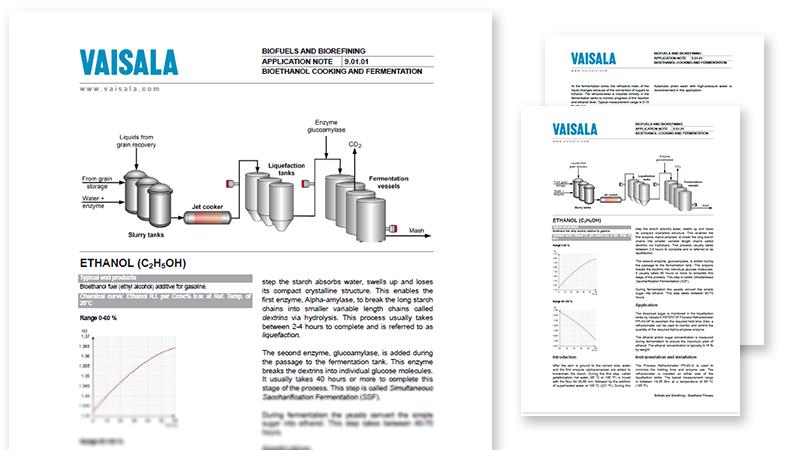Application note
Bioethanol cooking and fermentation
Bioethanol cooking and fermentation control for improved yield and process efficiency
Ethanol (C2H5OH) can be made from corn. Corn is ground, and water and enzymes are added to break down the starch.
During the gelatinization step, starch absorbs water, swells up and loses its crystallize structure. This results in breaking of long starch chain into dextrins, smaller chains by Alpha-amylase enzymes via hydrolysis. This process is called liquefaction.
During the passage to the fermentation, the second enzyme, glucoamylase is added to break the dextrins into individual glucose molecules. This step is called simultaneous saccharification fermentation (SSF). During fermentation the yeasts convert the simple sugar into ethanol.
Vaisala PolarisTM process refractometer is used to monitor the dissolved sugar in the liquefaction tanks. The in-line refractometer is also used to monitor and control the quantity of the required Alpha-amylase enzyme. The ethanol and/or sugar concentration is measured during fermentation to ensure the maximum yield of ethanol. Finally, these refractometer measurements allow to minimize the holding time and enzyme use in the process.
Learn the details of the bioethanol production process from the application note.
Download the application note in PDF by filling the form.
Go back to all Chemicals & Allied Products applications

You can modify your preference settings or unsubscribe at any time here